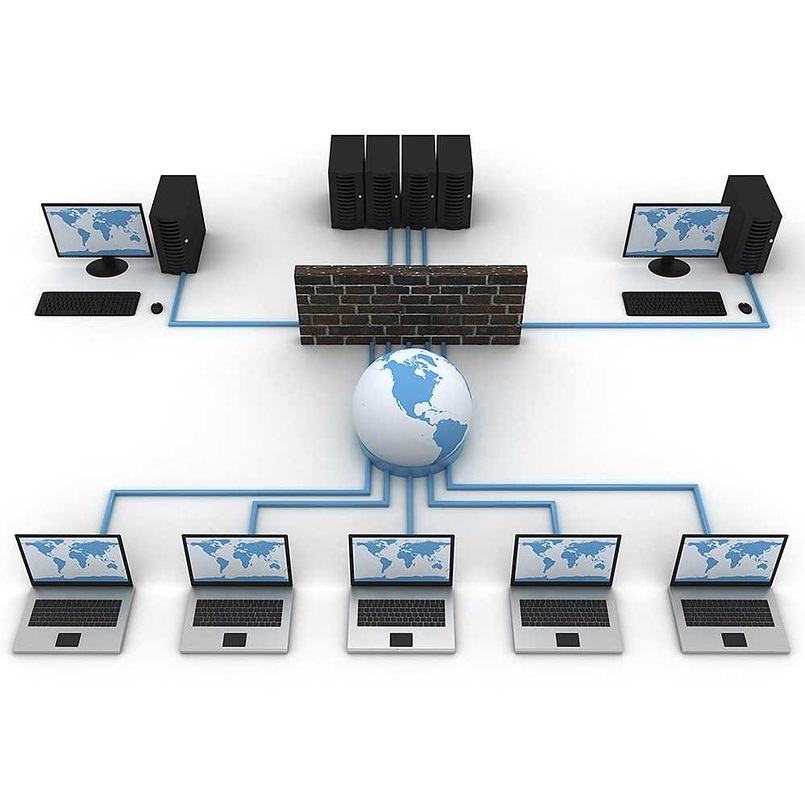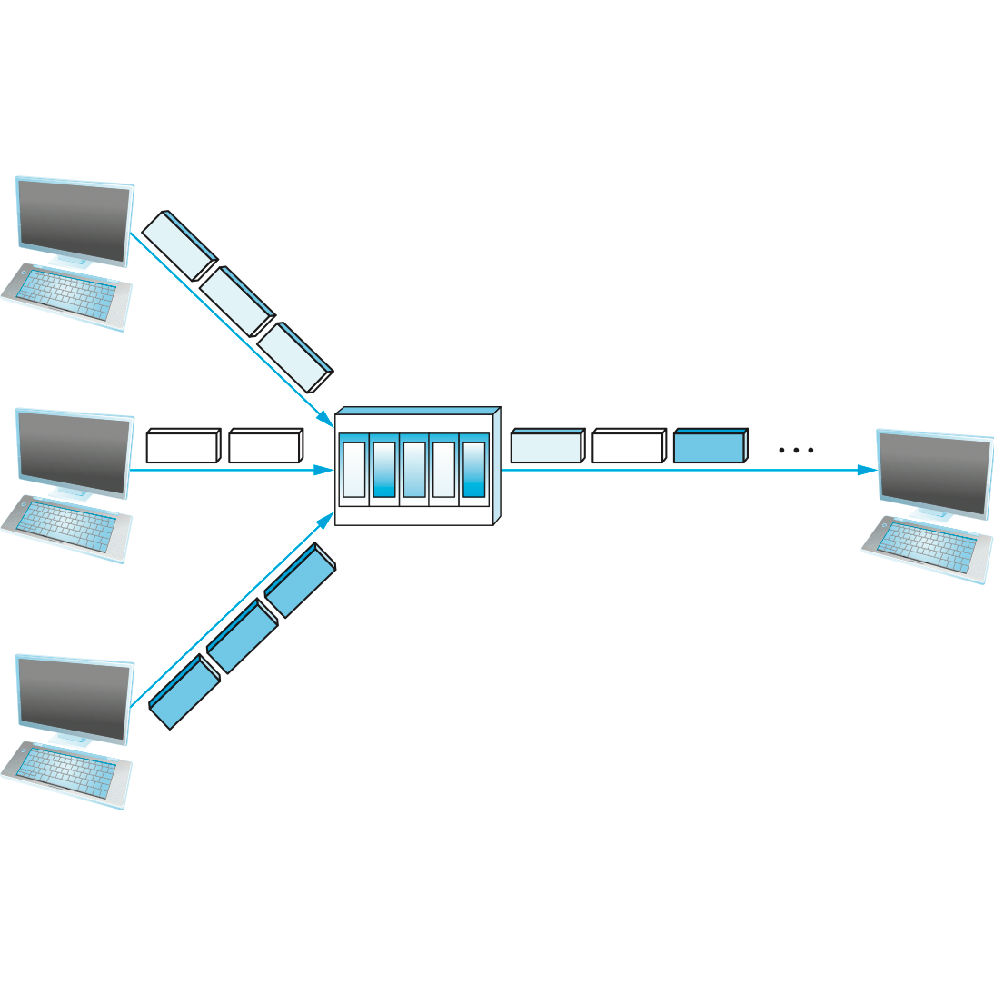The Dawn of Computer Networking
The history of computer networking represents transformative progress in technology, reshaping our communication and daily interactions. It’s a journey from bulky, isolated computers to a globally interlinked digital landscape. Let’s turn the page back and witness this evolution.
Early Concepts Prior to 1960s
Before the 1960s, computing was a solitary affair. Computers were rare, costly giants, used by few. Sharing resources was via a Time-Sharing System, allowing concurrent use, but limiting user interaction. These systems paved the way for shared processing power, yet real computer-to-computer communication remained a dream.
Packet-Switching Networks and ARPANET Origins in the 1960s
The genesis of modern networking took root in the 1960s with the inception of packet-switching. Born from the concept of ‘message blocks’ by Paul Baran and ‘packet switching’ by Donald Davies, packet-switching split data into packets, traversing multiple routes, ensuring reliable delivery despite potential network failures. This innovation set the cornerstone for ARPANET, the nascent form of today’s internet, by leveraging Interface Message Processors that allowed computers to join the network and signaled the start of a new digital communication era.

Development of Networking Protocols and Standards
The 1970s and 1980s marked significant advances in how computers connect. Protocols and standards came to life, shaping computer networking’s future.
Introduction of Ethernet and Local Area Networks (LANs)
In the early 1970s, Ethernet emerged as a game-changer for computer networking. Developed at Xerox PARC by Bob Metcalfe, it formed the basis of Local Area Networks (LANs). Ethernet used coaxial cables to link computers within a limited area. This invention led to the quick and efficient transfer of data. It enabled multiple devices to connect over a single network. By the1980s, the standardization of Ethernet by the IEEE as 802.3 allowed for broader adoption. Offices, schools, and institutions could now build their own networks. This was a leap towards our interconnected world.
The Role of TCP/IP in Network Communication
TCP/IP played an undeniable role in shaping network communication. Before TCP/IP, each network functioned independently, with its own protocols. In the 1970s, Vint Cerf and Bob Kahn envisioned a unifying protocol. TCP/IP emerged as a result. It allowed different networks to communicate. By the early 1980s, it was adopted as the standard protocol for ARPANET. TCP/IP set the foundation for the global network known as the internet. It handled data transfer through a reliable and efficient system. This protocol suite made it possible for diverse computer networks to integrate into an ever-growing digital ecosystem.
Expansion of Computer Networking in the 1970s and 1980s
The 1970s and 1980s were pivotal for the expansion of computer networks. They saw the growth of ARPANET, the precursor to the internet we know today, and the birth of TCP/IP – the protocol suite essential for network communication.
Growth of ARPANET and the Advent of TCP/IP
ARPANET expanded rapidly during the 70s. This network connected universities and government entities, fostering a new form of data exchange. In 1972, ARPANET introduced the use of email, revolutionizing digital communication.
The real game-changer, however, was the creation of TCP/IP. Vint Cerf and Bob Kahn developed this protocol. It allowed diverse networks to communicate seamlessly. ARPANET adopted TCP/IP in 1983. Soon it became the backbone of the burgeoning internet.
Emergence of Various Packet-Switching Networks
As ARPANET grew, other packet-switching networks surfaced. These included ALOHAnet and SATNET. The variety of networks created a need for a universal set of protocols. TCP/IP answered this call. It became the universal language for networked computers. By the end of the 80s, these protocols were so integral that the term ‘internet’ was coined to describe the interconnected network of networks.
During this period, networking moved from an academic and military tool to a broader public resource. New services and applications emerged. They paved the way for the next step in networking history: the rise of the commercial internet and the World Wide Web in the 1990s.
The Internet and World Wide Web Revolution in the 1990s
The 1990s spurred a tech revolution. With the Internet and World Wide Web, networking took a giant leap. Key events reshaped how we access and share information.
Decommissioning of ARPANET and Rise of NSFNET
By 1990, ARPANET had laid its groundwork. Yet, it gave way to a more robust NSFNET. This newer network served the academic world first. But soon, it became the backbone of what we now call the Internet. ARPANET’s decommission signaled the end of an era. But, the rise of NSFNET started a new chapter in digital connectivity.
Commercial Internet Service Providers and World Wide Web
The 1990s saw the birth of Commercial Internet Service Providers (ISPs). ISPs made internet access widely available. People could now explore beyond academic borders. The World Wide Web catapulted the Internet into mainstream use. Tim Berners-Lee’s invention brought a user-friendly face to the Internet. Websites, browsers, hyperlinks — these became tools for global digital navigation. The Web transformed the Internet into a vast information highway, forever changing how the world interacts.
Advances in Network Technology
As computer networks evolved, speed and efficiency became critical. Enter Fast Ethernet and later, Gigabit Ethernet, each significantly advancing the capabilities of Local Area Networks (LANs).
From Fast Ethernet to Gigabit Ethernet
In the mid-1990s, Fast Ethernet technology revolutionized networks by supporting speeds of up to 100 Mbps. This was a tenfold increase over the original Ethernet standard. Fast Ethernet utilized improved signaling schemes and different media, enabling faster data transmission. Gigabit Ethernet, introduced towards the end of the decade, further accelerated speeds to an impressive 1000 Mbps. This advancement catered to increasing demands for bandwidth-intensive applications. The mainstream adoption of these technologies confirmed their impact on network performance and overall user experience.
The Role of IEEE in Standardizing Networking Protocols
Throughout the progression of networking technology, the IEEE played a crucial role. This global body developed standards to ensure reliability and interoperability among devices. The IEEE 802.3 standard for Ethernet is among these key contributions. It provided guidelines for physical connections, data transmission methods, and network operations. These standards continue to influence the design and functionality of modern networks. They ensure that different hardware and software seamlessly communicate with each other, regardless of manufacturer. The impact of the IEEE’s work is evident in today’s wide-ranging and robust networks that support global connectivity.
Modern Innovations in Computer Networking
As technology advanced, computer networking saw innovative leaps. These changes enhanced speed, range, and usability.
Wireless Standards and Wi-Fi Evolution
Wireless networks transformed our lives. The introduction of Wi-Fi simplified internet access. It let us connect without wires. Over time, Wi-Fi standards evolved rapidly. They brought faster speeds and greater range. Each new standard brought improvements. For example, Wi-Fi 4 (802.11n) increased speed. Then, Wi-Fi 5 (802.11ac) took it further. Most recently, Wi-Fi 6 (802.11ax) arrived. It improved efficiency and speed, even in crowded places.
The Emergence of 5G and the Future of Networking
The latest revolution in networking is 5G. It guarantees faster speeds and low latency. This is great for mobile internet. It supports new applications like augmented reality. It also makes smart cities and IoT devices work better. Experts say 5G is the future. It will change how we use the internet once again.
The Influence of Networking in Today’s World
From the origins of packet-switching networks to the pervasive connectivity of today, computer networking has redefined human interaction, innovation, and access to information. The impact of networking is far-reaching, influencing various facets of daily life and driving global connectivity to new heights.
Impact on Daily Life and Global Connectivity
Networking touches almost every aspect of our daily lives, from social media to online banking, education to healthcare. It’s the engine that powers the internet, keeps businesses running, and connects families across continents. Consider smart homes, where devices communicate to enhance living. In education, students worldwide access vast knowledge pools, transcending physical boundaries. Global connectivity has also bolstered economies, allowing transactions and collaborations in real-time across the globe.
Future Directions and Technologies in Networking
Looking ahead, the trajectory of networking promises even greater innovations. The upsurge of the Internet of Things (IoT) points to a future where virtually everything is networked. 5G technology anticipates a surge in speed and efficiency, empowering novel applications and smart infrastructures. Similarly, advances like edge computing and quantum networking are set to redefine data processing and security. As we embrace these technologies, we stand on the brink of a new era in networking that will further transform our world and how we interact with it.


